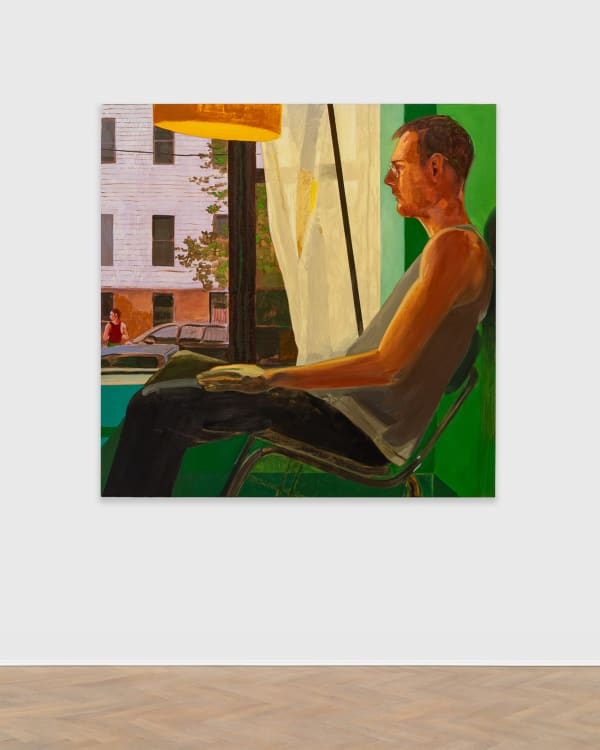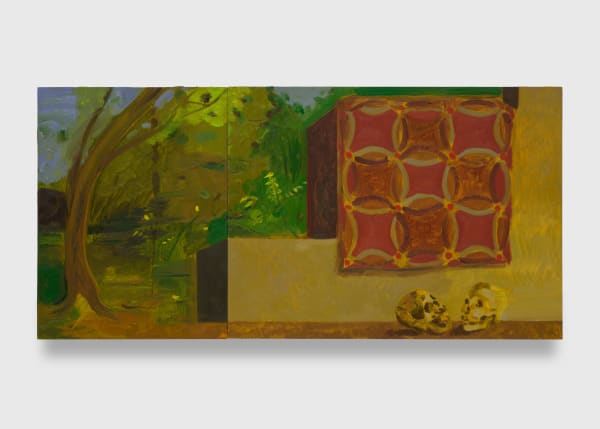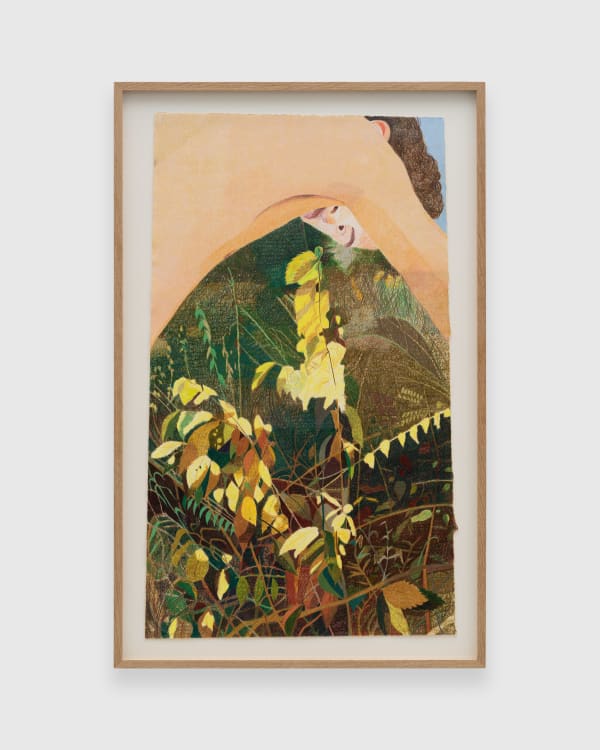-
Anthony Cudahy
ceaseless arranger
August 29 – October 18, 2025
Keizersgracht 241, Amsterdam (NL)
-
-
Anthony Cudahy weaves imagery culled from photo archives, art history, film stills, hagiographic icons and personal photographs to explore themes of queer identity and tenderness. His evocative figurative paintings and drawings are informed by extensive historical research. They negotiate feelings of loneliness, isolation, desire, and safety through the lens of the artist’s own autobiographical narratives and crafted mythologies.
-
"The Solitary Arranger might be reaching his brush to dip or dry it; again, the hand’s out of frame. The solitary arranger creates architectures which cast no shadows, flocks of birds, marriage quilts, floral visions of apocalyptic demise, and then, The Lovers (Triumph of Death): Each stepped part of a plane darkens to gold. Its selective third dimension luminesces a Sienese orangey rose. Bells and flames and abyss beyond. But, beside the guitar, its string broken in impossible angles, behind the book of looping patterns, the lovers sit. They are dressed. Their eyes meet, their wrists bend, interlace. Their hands are unseen but not off frame: they disappear into a crook of an elbow, an unbuttoned shirt. Time or body, landscape or image, pattern or person, present or past—loops and repetitions unstick. Pointing, reaching, grasping, arranging—hands move beyond boundaries or beyond the self to evoke a future as-of-yet decided or known, to create a connection, or merely to indicate something, or somewhere, else."
- Excerpt from the exhibition text, written by Drew Zeiba, 2025
-
-
In 1961 Henri Lefebvre wrote in his Critique of the Everyday Life, “Everyday life does not exist as a generality.” Cudahy’s paintings are exemplary in illustrating this argument. His figures read magazines or scroll through their phones in domestic interiors, brush shoulders or clasp hands in passing, converse in crowds, crouch in unmarked spaces, and lay idly among floral fields or wrinkled sheets. They face away from the viewer, their eyes casting longing glances in directions outside of the composition. Erotic, somber, celebratory, and private, these are not moments of anonymous mundanity but scenes of the specific extraordinary-ness produced within the everyday.
-
"Did I harm? Did I heal? Anthony Cudahy’s painting’s title asks. The empty hand reaches toward the hose or rope. A snaking thing. A line. Three men—hunched or lying; touching, all of them—pass it to a standing fourth. Or take it from him. Does his hand reach, or would to impose any narrative, any intention, be projection? The right wall appears like holographic graffiti, and, beyond it, the image splits, the painting becomes an asymmetrical diptych: a bent arm, disappearing into sketchy lavender sheets, props up an unseen head. If a portrait gets closer to anything, it’s unknowing. To try to find and fix the meaning behind any gesture or gaze would be misguided. Human yet architectonic, the arching arm could suggest an affordance unseen, like a knob or dial, something to open or change. Or it might suggest a wish to give or take. A gesture traces the empty air of narrative it can’t quite tell—like a Guston-like kettle, beside a man gazing at his own reflection, anticipates but does not generate a sound."
- Excerpt from the exhibition text, written by Drew Zeiba, 2025
-
-
-
Cudahy often begins with collages and sketches from his photo-references, finding inspiration in a variety of vernacular queer photo archives or his own great uncle Kenny Gardener’s extensive photo collection archived by his partner Ian Lewandowski. Moving through a variety of iterations from these vignettes, he generates compositions through acute attention to color and mark-making, sustaining a commitment to the mediums he uses as they guide the final works.
-
-
-
For enquiries regarding the featured works or for more information,
please email: enquiry@grimmgallery.com -
 Anthony Cudahy in his studio in Manhattan, NY (US), 2025 | Photo by Ian Lewandoswki
Anthony Cudahy in his studio in Manhattan, NY (US), 2025 | Photo by Ian Lewandoswki -

-
Explore more
Viewing Rooms
























